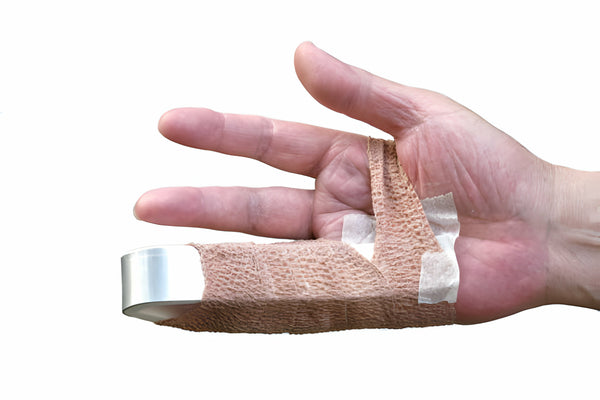Have you ever experienced the frustration of a finger getting stuck in a bent position, only to release with a painful snap? This common hand condition, aptly called trigger finger, can surprisingly disrupt daily life. Luckily, understanding its causes, symptoms, and treatment options can help you regain smooth finger movement and get back to doing what you love.
What Is Trigger Finger?
Imagine a pulley system guiding a rope. In your hand, tendons act like ropes, gliding through a sheath (pulley) to bend and straighten your fingers. Trigger finger occurs when this sheath becomes inflamed and thickened, constricting the tendon's movement. This narrowing causes friction, leading to the classic "catching" or "locking" sensation when bending or straightening your finger.
Why Does Trigger Finger Happen?
The exact cause of trigger finger is often unclear, but several factors can contribute:
- Repetitive hand use: Occupations or hobbies involving frequent gripping, grasping, or pinching can put repetitive strain on the tendons and their sheaths.
- Certain medical conditions: Diabetes, rheumatoid arthritis, and gout can increase inflammation in the hand, making trigger fingers more likely.
- Trauma: Direct injury or overuse of a specific finger can trigger inflammation in the sheath.
- Age: Trigger finger is most common between 40 and 60 years old, though it can affect people of any age.
Symptoms of Trigger Finger

The telltale signs of trigger finger can vary in intensity and progression, but some common ones include:
- Catching or locking sensation: This is the most characteristic symptom, often described as a "popping" or "clicking" feeling when bending or straightening the affected finger.
- Pain and tenderness: Pain is usually felt at the base of the finger, near the palm, and may worsen with activity.
- Stiffness: Your finger may feel stiff or difficult to move, especially in the morning.
- Swelling: A small bump or nodule may be visible at the base of the finger where the tendon sheath is inflamed.
- Finger locking: In severe cases, the finger can become stuck in a bent position and require assistance to straighten.
Trigger Finger Treatment
The good news is that the trigger finger often resolves on its own with conservative treatment. Here are the main approaches:
- Rest: Avoiding repetitive hand activities that aggravate the condition can allow the inflammation to subside naturally.
- Splinting: Wearing a splint to immobilize the affected finger for several weeks can help reduce inflammation and prevent further irritation.
- Non-steroidal anti-inflammatory drugs (NSAIDs): Over-the-counter pain relievers like ibuprofen or naproxen can help manage pain and inflammation.
- Corticosteroid injections: A single steroid injection into the inflamed sheath is often highly effective in relieving symptoms and improving finger movement.
Non-surgical Treatment

- Rest and activity modification: Avoiding activities that aggravate the condition and resting the affected hand can help reduce inflammation and promote healing.
- Splinting: Wearing a splint to immobilize the affected finger for several weeks can help alleviate pain and prevent further irritation.
- Corticosteroid injections: Injecting a corticosteroid medication directly into the inflamed tendon sheath can significantly reduce inflammation and improve finger movement. This is often the first line of treatment and is highly effective in most cases.
- Nonsteroidal anti-inflammatory drugs (NSAIDs): Over-the-counter pain relievers like ibuprofen or naproxen can help manage pain and inflammation associated with the trigger finger.
- Hand therapy: Specific exercises prescribed by a hand therapist can help maintain flexibility and range of motion, promoting optimal healing and preventing recurrence.
Surgical Treatment (Trigger finger surgery)

If non-surgical options fail to provide lasting relief, surgery may be recommended. The procedure, known as trigger finger release, involves releasing the tight tendon sheath, allowing the tendon to glide smoothly and relieving the catching sensation. Surgery is typically performed under local anesthesia as an outpatient procedure and has a high success rate.
Recovery and Prognosis
Most people with trigger fingers respond well to non-surgical treatment, regaining full finger function within weeks or months. However, recovery time can vary depending on the severity of the condition and the chosen treatment approach. Following your doctor's instructions and participating in hand therapy are crucial for optimal healing and preventing recurrence.
Living with a Trigger Finger
With proper management and treatment, managing the trigger finger effectively is possible. Early diagnosis and intervention can prevent chronic pain and complications. If you experience any symptoms of a trigger finger, consult your doctor for a proper diagnosis and discuss the best treatment options for your case. By taking proactive steps and seeking professional guidance, you can regain hand function and improve your quality of life.
























































